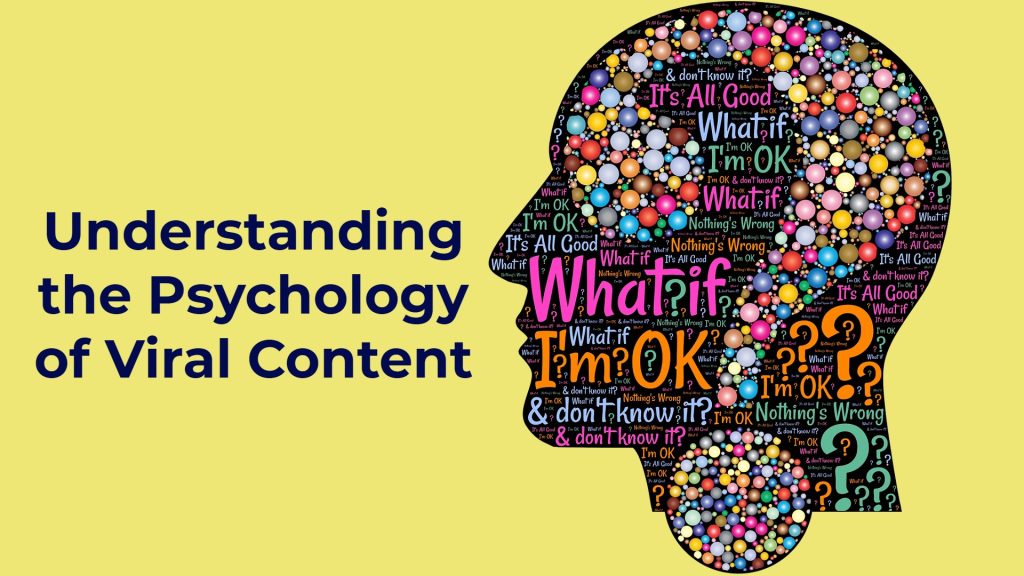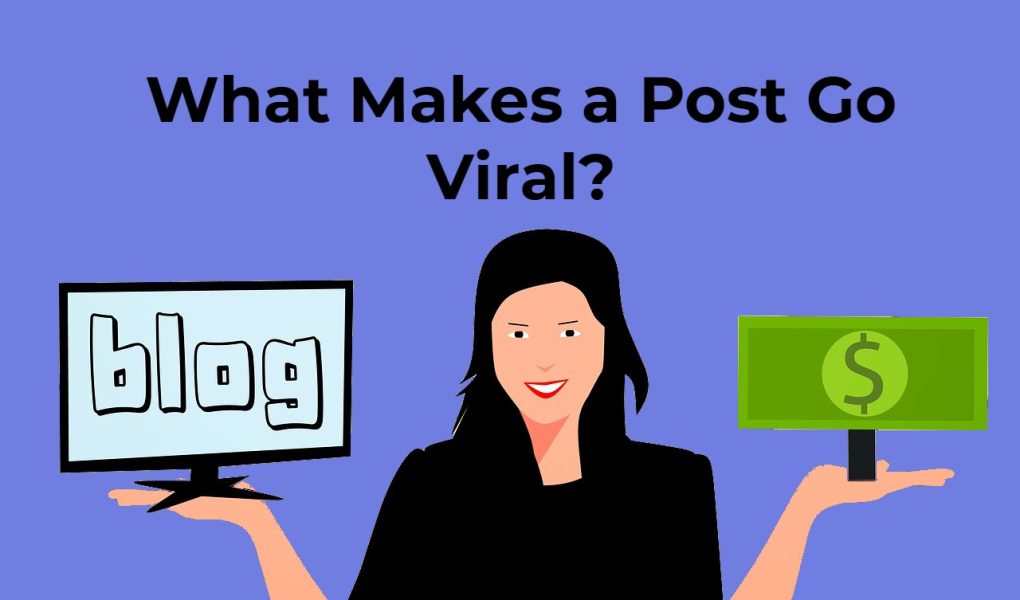Online marketing cannot be ignored. But let’s talk about the rockstar of this sphere, viral content. Viral content refers to any form of digital material, such as a blog post, picture, or video, that becomes rapidly and widely shared on the Internet.
The reasons why a particular piece of content goes viral can be complex and are often rooted in human psychology, emotions, storytelling, and other factors.
“Understanding the science behind what makes a post go viral can significantly enhance a content creator’s ability to craft compelling, shareable content.”
This article will delve into the key elements that make a post go viral, dissecting the psychology, technical factors, and strategies behind viral content. The objective is to provide actionable tips for content creators looking to increase the reach and engagement of their own posts.
By the end of this article, you will have a greater understanding of what makes a post go viral and how to apply these principles to your own content creation endeavors.
Table of Contents
Understanding the Psychology of Viral Content

Understanding the psychology of viral content is a vital starting point in our endeavor to grasp what makes a post go viral. Viral content, by definition, is a type of content that rapidly spreads across the internet, attracting massive amounts of engagement and shares within a short timeframe. But what drives this rapid spread? The answer lies in human psychology.
Research indicates that viral content often elicits strong emotional responses from its audience. This emotional engagement is a crucial element in the viral equation.
When a piece of content resonates emotionally with an individual, it increases the likelihood of that person sharing the content, thus contributing to its potential virality. The type of emotion evoked can vary widely, from happiness and awe to anger and surprise. The key is that the content elicits a strong, visceral reaction.
Furthermore, the psychology of viral content is closely tied to the concept of social currency. Social currency refers to the idea that sharing interesting, novel, or entertaining content can elevate an individual’s status within their social network.
Essentially, people share content that makes them look good in the eyes of others. Virality, therefore, is not just about the content itself but also about the perceived value it can provide to the sharer.
Finally, the principle of reciprocity plays a significant role in the psychology of viral content. This principle suggests that when someone shares content with us, we feel a social obligation to share content in return. Thus, creating content that people want to share not only helps to increase its reach but also fosters a sense of community and engagement among your audience.
See also: 5 Reasons Your LinkedIn Content May Be Falling Flat
What are the psychological factors that make people share content?
Understanding the psychology of why people share content is a fundamental step in creating viral content. A deeper dive into this matter reveals an intertwined web of factors that trigger the sharing impulse in individuals.
1. Desire for Social Validation
People are inherently social creatures. Sharing content can be a way of connecting with others and contributing to the social fabric. When individuals share a piece of content, it often serves as a reflection of their identity and their beliefs. By sharing, they’re seeking validation and connection from their social circles.
2. Intrinsic Rewards
In addition to social validation, people often share content because it brings them intrinsic rewards. This could be the simple joy of knowing they’ve entertained their friends with a funny video, or the satisfaction of teaching others something new. These individuals share content because it feels good, and the anticipation of this feeling can motivate them to share even more.
3. Emotional Engagement
Content that sparks strong emotions, whether positive or negative, tends to be shared more often. This is because emotions are powerful motivators of human behavior. When content evokes laughter, surprise, anger, or joy, it can compel readers to share it, thereby passing on the emotional experience to others.
4. Practical Value
Content that provides useful information or solutions to problems can also become viral because of its practical value. People are motivated to share this kind of content to help others and make their lives easier. If your content can save someone time, educate them on a relevant topic, or provide a solution to their problem, it stands a good chance of being shared.
5. Identity and belonging
People often share content that aligns with their personal identity or sense of belonging to a particular group or community. For example, a post about a niche hobby or interest that they share with others can be highly shareable among that community.
6. Visual appeal
Finally, content that is visually appealing or aesthetically pleasing is also more likely to be shared. This could include anything from stunning photography to eye-catching infographics or videos.
Understanding these psychological factors of sharing can help content creators craft posts that tap into these motivators. The result is content that resonates with audiences and is spread organically, increasing its reach and influence.
See also: Advantages of Content Optimization for Online Marketing in 2023
How Emotions Make Your Post Shareable
Emotion plays a pivotal role in making content shareable and, potentially, viral. Whether it’s joy, awe, surprise, amusement, or even anger, content that evokes strong emotional reactions tends to generate more shares. This is because emotion drives action and shapes the decisions we make, even unconsciously.
But how does this work? Why do emotions make your post shareable? Let’s break it down:
Emotional Responses Trigger Action
According to various psychological studies, humans are more likely to share content that elicits strong emotional responses. This is due to the fact that emotions, particularly those that are intense or unexpected, trigger a physiological response in our bodies. This response compels us to act – which in the context of social media, means clicking the share button.
Emotionally Charged Content is Memorable
Content that stirs up emotions is also more memorable. When we experience an emotional reaction, our brain’s amygdala activates and helps to imprint that experience in our memory. As a result, content that makes an emotional impact is more likely to stick in our minds and be shared with others.
The Role of Positive and Negative Emotions
It’s also important to note that both positive and negative emotions can trigger sharing. Positive content, such as uplifting stories or funny memes, is shared because it induces feelings of happiness and amusement. On the other hand, content that evokes negative emotions like anger or fear can also go viral. This is because it often drives people to take action, such as sharing content to raise awareness about a particular issue.
What’s the Role of Storytelling in Viral Content?
Storytelling is a powerful tool when it comes to creating viral content. The process of telling a story, be it through words, images, or videos, allows the reader to make an emotional connection with the content. This connection is what often prompts them to share the content with others.
How Does Storytelling Work?
Storytelling works by engaging the reader’s emotions and imagination. It creates a narrative that the reader can immerse themselves in and relate to. This emotional engagement is key in generating the kind of response that makes content go viral. When a reader connects with a story, they are more likely to share it with others, amplifying its reach and visibility.
- The Role of Authenticity
Authenticity is a critical element in storytelling for viral content. Readers are drawn to stories that feel genuine and real. Authentic stories resonate more deeply, creating a more lasting impact. When a story feels true, it builds trust and credibility, which encourages sharing.
- The Power of Human Interest Stories
Human interest stories, which focus on individuals or groups, often have a strong potential to go viral. These are the stories that touch on universal human themes and resonate on a personal level. They evoke strong emotions and create a sense of empathy, which often prompts sharing.
- Telling Your Brand’s Story
Storytelling can also be a powerful way to communicate your brand’s mission, values, and identity. By creating a compelling narrative about your brand, you can engage your audience in a deeper, more meaningful way. This increases brand loyalty and encourages your audience to share your content, increasing its potential to go viral.
The Importance of Unique and Relevant Content
When it comes to creating viral content, it’s paramount to understand the importance of unique and relevant content. This principle isn’t exclusive to viral content but is the cornerstone of any effective content marketing strategy. However, its importance is accentuated when the goal is to make a post go viral.
The internet is awash with a staggering amount of content. With millions of blog posts, tweets, and videos being published daily, standing out from the crowd can prove challenging. The key to cutting through the digital noise lies in producing content that is both unique and relevant to your target audience.
Uniqueness ensures your content stands out. It reduces redundancy and competition, thereby increasing the likelihood of catching the attention of your audience. Unique content is also more likely to be shared because it offers new information or perspectives that aren’t available elsewhere.
On the other hand, relevancy ensures your content resonates with your audience. The more relevant your content is to your audience’s interests, needs, or problems, the more likely they are to engage with it. In the realm of viral content, high engagement is often a precursor to high shareability.
Creating unique and relevant content involves a deep understanding of your target audience, their preferences, and their online behaviors. It’s about finding the intersection between what you want to say and what your audience wants to hear. When these two aspects align, your content stands a better chance of going viral.
How to Create Unique and Relevant Content
Creating unique and relevant content starts with thorough audience research. This includes understanding your audience’s demographics, interests, and online behaviors. Once you have a firm grasp of who your audience is, you can start to create content that is tailored to their preferences.
- Original Research: Conduct surveys, interviews, or experiments to gather new data. This information can be used to create unique articles, infographics, or videos that provide fresh insights into your industry or market.
- Unique Perspectives: Offer a unique take on a popular topic. This could involve challenging conventional wisdom, offering a contrarian viewpoint, or exploring a topic from a new angle.
- Personal Stories: Tell personal stories or share real-life experiences. These types of content are inherently unique and can help make your brand more relatable and authentic.
- Trending Topics: Tap into trending topics or timely events. Creating content that is timely and relevant can help attract more views and shares.
Viral Content: The Technical Factors
Creating viral content might not seem as glamorous as the creative elements, but they are equally crucial to consider. These elements can often play a pivotal role in the reach and engagement level of your posts.
SEO Optimization
Search engine optimization (SEO) is a key factor in creating viral content. By using targeted keywords, meta descriptions, and alt tags, you increase your content’s discoverability. SEO isn’t just about attracting search engines; it’s about understanding your audience and what they’re searching for. Hence, a well-optimized post will draw in more traffic, increasing the chances of it going viral.
Mobile Optimization
With the majority of users now accessing content via mobile devices, it’s crucial that your content is mobile-friendly. This includes ensuring your website loads quickly, has a responsive design, and has easy-to-navigate interfaces. A poor mobile experience can deter users and diminish the chances of your content being shared.
See also: Improve Your User Experience With Search Quality Rating
Load Time
Your content’s load time can significantly impact its virality. As a rule of thumb, the faster your content loads, the better. Research indicates that even a one-second delay in page response can result in a 7% reduction in conversions. Therefore, optimizing your website’s speed is a critical step towards creating viral content. Read What Is the Average Conversion Rate & How to Optimize It?
Shareability
Another crucial technical factor is the ease with which your content can be shared. This includes having social sharing buttons prominently displayed and making sure that when your content is shared, it looks good on social media. This means implementing Open Graph tags and Twitter Cards, so when your content is shared, it includes a catchy title, engaging description, and eye-catching image.
In essence, the technical aspect of viral content is about making it as easy as possible for your content to be found, accessed, and shared. By paying close attention to these technical elements, you can significantly increase your content’s chances of going viral.
Strategies for Promoting Viral Content
Viral content is just one part of the equation. Even a well-crafted, emotionally charged post may not reach its full potential without a sound promotional strategy. The following are key strategies that can significantly enhance the visibility and reach of your content, thereby increasing its chances of going viral.
Invest in Paid Social Media Advertising
Organic reach can be limited, particularly for new content creators or small businesses. Paid social media advertising, such as Facebook Ads or Instagram-sponsored posts, can help your content reach a wider, targeted audience. Furthermore, these platforms provide tools to analyze engagement, allowing you to tweak your campaign for maximum impact.
Leverage the Power of Email Marketing
Despite the surge in social media, email remains a potent tool for content promotion. By creating an attractive, succinct summary of your content and sending it to your email list, you can drive traffic directly to your post. A strong subject line is crucial to stimulate curiosity and increase open rates.
Engage with Your Audience
Engagement isn’t a one-way street. Promptly replying to comments, answering queries, and acknowledging feedback can create a sense of community among your followers. This not only promotes loyalty but also encourages your followers to share your content, increasing its chances of going viral.
Optimize Content for Search Engines
SEO is invaluable in content promotion. By understanding and implementing SEO principles, you can increase the visibility of your content on search engines. This can significantly boost organic traffic, which is often more engaged and likely to share your content.
Collaborate with Influencers and Bloggers
Partnerships with influencers and bloggers can give your content a significant boost. Their endorsement can expose your content to their established audience, greatly increasing its reach. Moreover, their seal of approval can enhance the credibility of your content, making it more shareable.
In Summary, promoting your content demands as much effort and strategy as creating it. However, the payoff can be substantial, resulting in a piece of viral content that can dramatically increase your online presence and impact.
See also: Top 7 Ways Machine Learning Takes Digital Marketing To The Next Level
Conclusion
Viral content is an integral part of successful digital marketing. It’s a powerful tool that can significantly enhance your online presence, engage your audience, and increase the reach and impact of your posts. However, creating viral content is not just about luck; it involves understanding human psychology, using effective storytelling techniques, creating unique and relevant content, and optimizing technical factors. Moreover, a sound promotional strategy is necessary to ensure your content reaches its full potential. By understanding these elements and applying them to your content creation, you can significantly increase your chances of creating a post that will go viral.
How to Create Viral Content?
Creating viral content is a blend of science and art. Start by knowing your audience and what they’re passionate about. Use compelling headlines and eye-catching visuals to grab attention. Focus on quality and originality, not just quantity. Engaging, valuable content is more likely to be shared. Use analytics tools to track what’s working, and don’t forget to leverage social media platforms for maximum reach. Remember, virality is unpredictable, but these strategies can improve your chances!
What Is Viral Content in Social Media?
Viral content in social media is any post, video, or article that gains rapid and widespread attention. It’s shared, liked, and commented on by a large number of people in a short period, reaching far beyond the original audience.
Which Content Goes Viral?
Content that evokes strong emotions, offers value, or solves a problem has the potential to go viral. Trending topics, humor, and high-quality visuals also contribute to virality. However, there’s no guaranteed formula; what goes viral can often be unpredictable.
What Is Viral Content on Instagram?
Viral content on Instagram is typically a post or video that garners a high level of engagement quickly. It could be a stunning photo, a captivating Reel, or an inspiring story. These posts often appear on the ‘Explore’ page, getting likes, comments, and shares from a much broader audience than just your followers.



